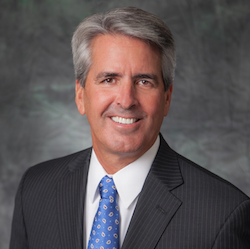Since the announcement of the new capital rule, Ginnie Mae has been on the receiving end of a lot of backlash from industry and the analysts who associate with the mortgage banking marketplace. Despite significant, thoughtful feedback to Ginnie Mae about the impacts of some of their proposals, it seems that Ginnie Mae simply turned a blind eye to these concerns.
As a former FHA Commissioner under President Obama, I was there when the first discussions of using the False Claims Act to penalize lenders was initiated. Over the two terms of the Obama administration, the outcome was made clear: Banks simply left the HUD program in force.
The rise and dominance of nonbanks was not solely due to the competitive value proposition brought by independent mortgage bankers (IMBs), but more so by the evaporation of large banks from the FHA program altogether. The use of overlays was clearly a way for banks to back away from the program while IMBs stayed strong, and the resulting shift in market share between bank and IMB became fate.
Fast forward to today. Just as the previous regime drove banks away, the Biden administration is on the verge of driving nonbank mortgage servicers away from Ginnie Mae altogether. At minimum, the changes put forth in the new rule are so punitive that either costs will rise, and thus interest rates for borrowers will, or some/many current Ginnie Mae servicers will opt to leave the program altogether.
So what’s in the new rule? While one can read the full rule on the Ginnie Mae website, the most egregious impact comes from the requirements for Ginnie Mae servicers to hold significantly increased levels of capital against the MSR.
Although Ginnie lowered the minimum required RBC ratio from 10% to 6% in the final requirements, it preserved the punitive treatment of mortgage servicing rights (MSRs), including the 250% risk weight on the MSR asset and the dollar-for-dollar deduction from capital for “excess MSRs,” which is defined as the value of gross MSRs minus Adjusted Net Worth.
The RBC requirement — particularly the deduction for excess MSRs — clearly is the most significant remaining problem with the now-final standards.
So what’s the issue here? The answer is that Ginnie Mae has created a policy that does not reflect the risk they are concerned with and yet will result in a significant blow to the willingness of mortgage lenders and servicers to participate in the program.
While Ginnie Mae is concerned about liquidity for servicers in a credit event when advances are highly dependent on available liquidity, this capital standard completely misses the mark.
Risk-based capital makes sense for institutions that are significant risk takers. Many banks, for example are risk “takers,” meaning they lend and retain risk on multiple asset classes. Whether it be loans held for sale — including ARMs and jumbo mortgages — or auto loans, commercial loans, credit cards, student loans, or other forms of commerical or consumer debt, the need for banks to hold real RBC on these risk-retained assets makes sense.
Nonbanks, IMBs, are different. IMBs for the most part are “pass through” entities. Aside from pipeline risk weighting for the loan to fund and liquidity risk for servicing, virtually all loans originated are passed through to either a government guaranteed instrument (FHA/VA/USDA or GSE) or sold as whole loan to a risk-taking aggregator like a large bank.
IMBs are mono-line entities. They do not engage in multi-class lending like many banks do and, more importantly, they do not retain long-term risk aside from the risks I have already highlighted.
The Mortgage Bankers Association (MBA), has been vocal on this rule going back to when it was first proposed. Despite direct appeals from the MBA, to date, Ginnie Mae has not provided publicly any assessment of the market impact. But MBA has its own view of impact, which is an approximate 37% increase in capital needed from the industry to meet this standard, requiring an approximate $2.5 billion in capital.
Thankfully, MBA is resolute to try to impress the adverse impact of this rule on Ginnie Mae leadership, but so many of us are literally dumbfounded by this current state.
It is said that Ginnie Mae has received positive feed back from ratings agencies on this rule, but that really is an unfair review to trumpet. The ratings agencies always prefer more capital than less. They certainly haven’t done any assessment on the impact to the programs.
Additionally, Ginnie Mae continues to argue about liquidity needs for servicers, something that is actually their own doing in their “scheduled” payment requirements versus the GSEs’ “actual” structure. But liquidity is different than capital and can be solved through entirely different measures.
Frankly, the arguments in defense of this overbearing rule from Ginnie Mae fall flat when looking at the real exposure. What’s odd is that the new capital rule even requires more capital be held for GSE servicing at a level higher than the FHFA’s own capital rule requires.
I’ve served in a HUD political leadership role. I’ve seen career staff overrun political leadership, especially on very technical issues. In this case, just as the Obama administration drove banks out of the program, the Biden administration risks doing the same to nonbanks.
There are droves of servicers who could not meet this new requirement today. There is public discussion about leaving the program altogether by many servicers and for those remaining, the costs to service will go up and therefor mortgage rates will as well.
I’ve listened to Secretary Fudge and other representatives of the Biden administration talk about access and affordability for minorities and other first-time homebuyers. The FHA program is unique in terms of serving the American homebuyer. Eighty percent of FHA borrowers are first-time homebuyers and two-thirds of African American buyers get their mortgage through the FHA.
But talk is talk. What HUD is actually doing here is setting up the program to drive mortgage servicers away from it, raise costs to homebuyers, and reduce the value of a program that serves the most vulnerable in the homeownership system.
Legacy is what it is, and in this case, Ginnie Mae is headed down an unnecessary path to fix a problem that could be resolved in a far better way. From my seat, I implore Alanna McCargo to listen to the technical expertise at the MBA, and others outside Ginnie Mae, and not be swayed by more draconian career staff who may be pushing Ginnie Mae and the mortgage programs it securitizes into greater irrelevance.
David Stevens has held various positions in real estate finance, including serving as senior vice president of single family at Freddie Mac, executive vice president at Wells Fargo Home Mortgage, assistant secretary of Housing and FHA Commissioner, and CEO of the Mortgage Bankers Association.
This column does not necessarily reflect the opinion of HousingWire’s editorial department and its owners.
To contact the author of this story:
Dave Stevens at dave@davidhstevens.com
To contact the editor responsible for this story:
Sarah Wheeler at sarah@hwmedia.com






